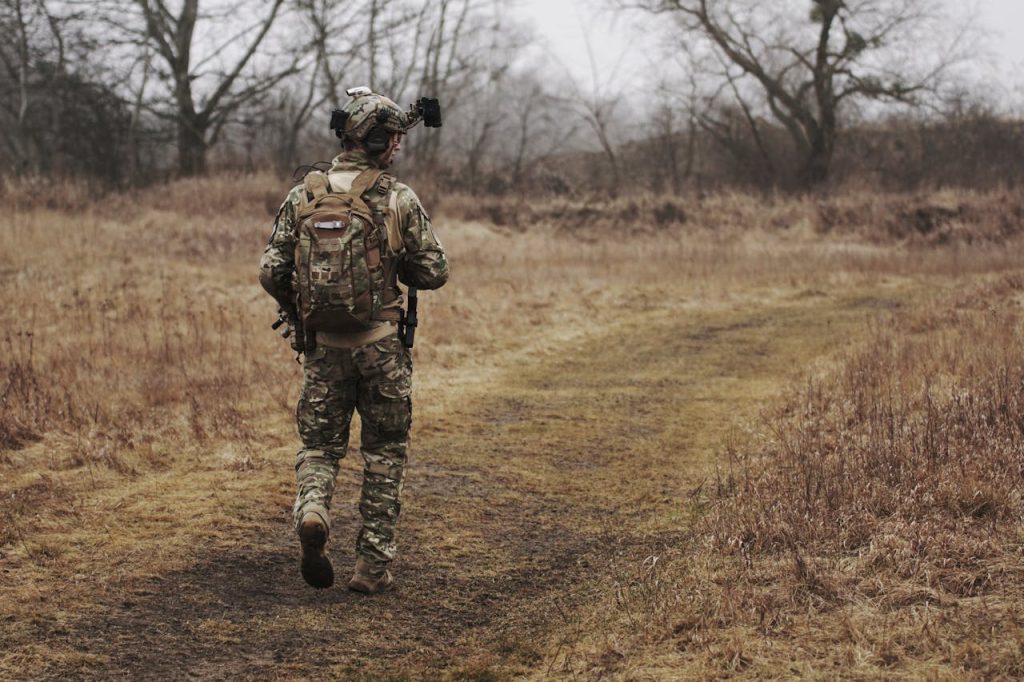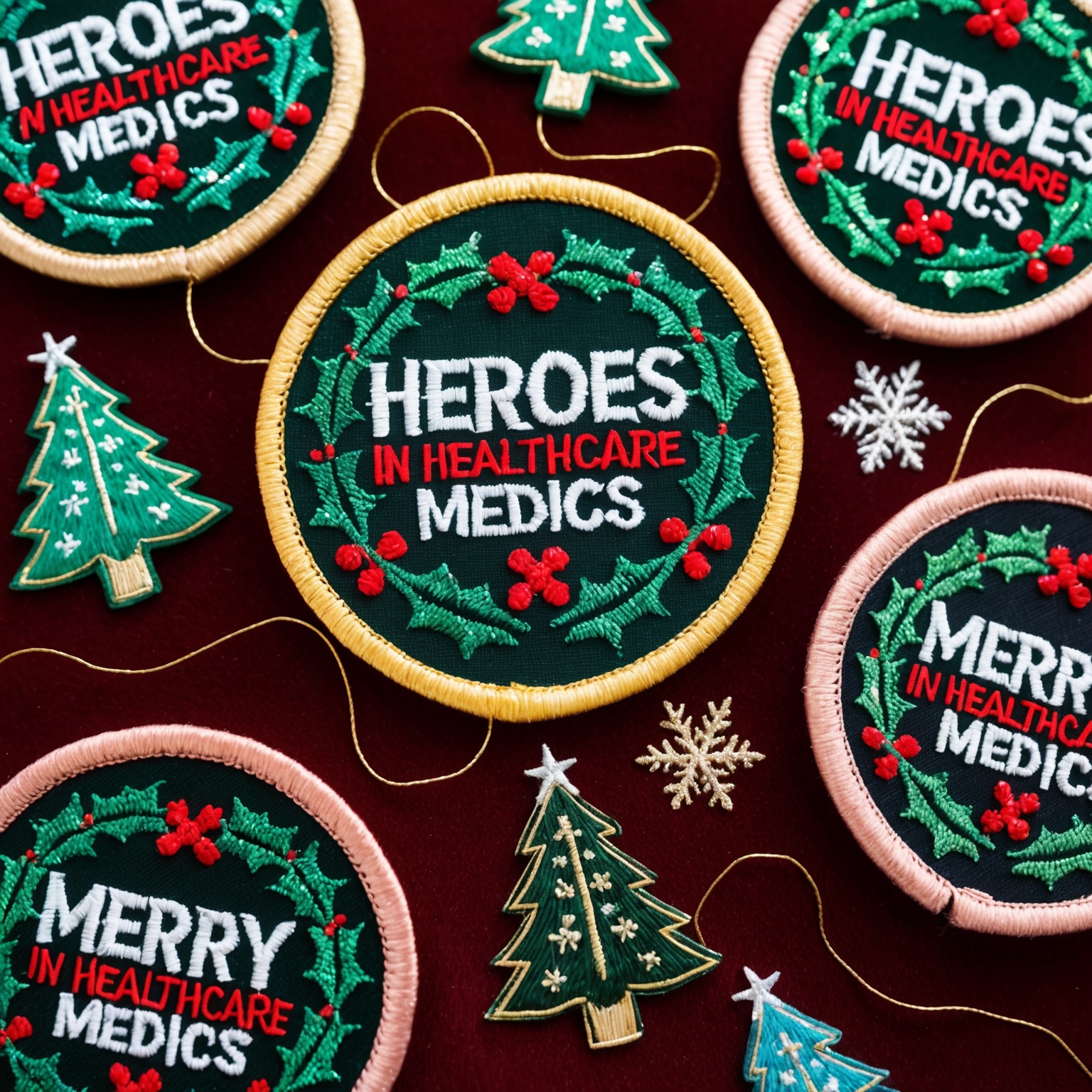The Significance of Commemorative Patches
Commemorative patches are more than just pieces of embroidered fabric; they are symbols of achievement, pride, and unity. These patches serve as tangible reminders of significant missions, tours, and events, capturing the essence of the experiences they represent. Whether used by military units, corporate teams, or community organizations, commemorative patches offer a unique way to celebrate success and create lasting memories. This comprehensive guide will explore the importance of commemorative patches, their design process, and how they can be used to honor accomplishments.
1. The History and Evolution of Commemorative Patches
Early Beginnings
The tradition of using patches to commemorate achievements dates back centuries. Early examples include military insignias and heraldic badges used to denote rank, allegiance, and accomplishments.
Example: Medieval knights wore embroidered badges on their tunics to display their family crest and signify their loyalty and achievements in battle.
Development in Modern Times
In modern times, the use of commemorative patches expanded significantly, especially during the 20th century. Military units, in particular, adopted patches to commemorate specific missions, tours, and campaigns.
Example: During World War II, American military units began creating unique patches to commemorate their participation in various battles and campaigns, a tradition that continues to this day.
2. The Purpose and Benefits of Commemorative Patches
Celebrating Achievements
Commemorative patches are a powerful way to celebrate achievements and milestones. They serve as a visual representation of success, fostering a sense of pride and accomplishment.
Example: A fire department creates a commemorative patch to celebrate the successful completion of a challenging training program, boosting morale and camaraderie among firefighters.
Building Unity and Identity
Patches help build a sense of unity and identity within a group. Wearing a commemorative patch signifies membership in a team or unit, strengthening bonds and promoting solidarity.
Example: A corporate team participating in a charity run designs a commemorative patch to symbolize their collective effort and team spirit, enhancing their sense of unity.
Preserving Memories
Commemorative patches act as keepsakes that preserve memories of significant events and experiences. They provide a tangible link to the past, allowing individuals to recall and share their stories.
Example: A group of astronauts receives commemorative patches for a successful space mission, serving as a cherished reminder of their journey and accomplishments.
3. Designing Commemorative Patches
Defining the Concept
The first step in designing a commemorative patch is defining the concept. This involves identifying the key elements that the patch should represent, such as the mission, event, or achievement being commemorated.
Tips:
- Purpose: Clearly define the purpose of the patch and what it represents.
- Key Elements: Identify key elements, symbols, or themes to include in the design.
- Audience: Consider the preferences and expectations of the intended audience.
Example: A humanitarian aid organization designs a commemorative patch for a disaster relief mission, incorporating symbols of hope, resilience, and the affected region.
Choosing Colors and Symbols
Colors and symbols play a crucial role in the design of commemorative patches. They convey specific meanings and emotions, enhancing the overall impact of the patch.
Tips:
- Colors: Choose colors that reflect the mission or event and evoke the desired emotions.
- Symbols: Incorporate symbols that represent the mission, such as logos, icons, or emblems.
- Text: Include relevant text, such as dates, names, or slogans, to provide context and detail.
Example: A military unit designs a commemorative patch for a peacekeeping mission, using blue to symbolize peace and incorporating a dove and olive branch as symbols of hope and unity.
Selecting the Shape and Size
The shape and size of a commemorative patch should complement the design and purpose. Common shapes include circles, rectangles, shields, and custom shapes that align with the theme.
Tips:
- Shape: Choose a shape that enhances the design elements and fits well on uniforms or gear.
- Size: Ensure the size is appropriate for visibility and detail, considering where the patch will be worn or displayed.
Example: A cycling team creates a rectangular commemorative patch for a charity ride, with a size that fits well on their jerseys and backpacks.
4. The Production Process of Commemorative Patches
Design Approval
Once the design is finalized, it needs to be approved by all relevant parties. This step ensures that the patch meets the expectations and standards of the organization or group.
Tips:
- Review: Conduct a thorough review of the design, checking for accuracy and completeness.
- Feedback: Gather feedback from key stakeholders and make necessary adjustments.
- Final Approval: Obtain final approval before proceeding to production.
Example: A veterans’ organization reviews and approves the design of a commemorative patch for a reunion event, ensuring it accurately represents their shared experiences.
Choosing the Right Materials
The choice of materials is essential for the quality and durability of commemorative patches. Common materials include high-quality fabrics, threads, and backing options.
Tips:
- Fabrics: Choose durable and visually appealing fabrics, such as twill or felt.
- Threads: Select high-quality threads that provide vibrant colors and resist fading.
- Backing: Consider backing options like iron-on, Velcro, or adhesive, depending on how the patch will be used.
Example: A police department chooses durable twill fabric and high-quality embroidery threads for their commemorative patches, ensuring they withstand daily wear and tear.
Embroidery and Finishing
The embroidery process involves stitching the design onto the fabric using specialized machines. Once the embroidery is complete, the patches undergo finishing steps, such as cutting, edging, and backing application.
Tips:
- Embroidery: Ensure precise and high-quality embroidery to capture all design details.
- Edging: Use techniques like merrowed or heat-cut edges to enhance the patch’s appearance and durability.
- Backing: Apply the chosen backing option to facilitate attachment to uniforms or gear.
Example: A school designs commemorative patches for a graduating class, using merrowed edges and iron-on backing for easy application to graduation robes and jackets.
5. Distributing and Using Commemorative Patches
Presenting the Patches
The presentation of commemorative patches adds to their significance and impact. Consider hosting a special ceremony or event to distribute the patches and celebrate the achievements they represent.
Tips:
- Ceremony: Organize a presentation ceremony to formally distribute the patches and honor recipients.
- Speeches: Include speeches from leaders or participants to highlight the significance of the achievement.
- Certificates: Consider pairing the patches with certificates or letters of recognition.
Example: A nonprofit organization hosts a special event to distribute commemorative patches to volunteers who completed a major project, recognizing their hard work and dedication.
Incorporating Patches into Uniforms and Gear
Commemorative patches are often worn on uniforms, gear, or personal items. Ensure that the placement and attachment of the patches are consistent and respectful of uniform regulations.
Tips:
- Uniform Placement: Follow uniform guidelines for patch placement, such as on shoulders, sleeves, or chest areas.
- Attachment: Use appropriate attachment methods, such as sewing, ironing, or Velcro, to secure the patches.
- Consistency: Maintain consistency in patch placement to ensure a uniform and professional appearance.
Example: A scout troop adds commemorative patches to their uniforms, placing them on the left sleeve in accordance with scouting regulations.
Displaying Patches
In addition to wearing them, commemorative patches can be displayed in various ways to preserve and showcase their significance.
Tips:
- Frames: Frame patches in shadow boxes or display cases for a polished and protective display.
- Albums: Use albums or binders with clear sleeves to organize and store patches.
- Boards: Create display boards or banners to arrange patches in a visually appealing manner.
Example: A military unit creates a display board featuring commemorative patches from different missions, showcasing them in the unit’s headquarters.
6. The Impact of Commemorative Patches Beyond the Immediate Group
Fostering Community and Public Recognition
Commemorative patches can foster a sense of community and public recognition, highlighting the achievements of a group or organization to a broader audience.
Tips:
- Media Coverage: Share stories and images of the commemorative patches and the achievements they represent through media channels.
- Social Media: Use social media platforms to highlight the patches and engage with the community.
- Public Events: Display patches at public events, exhibitions, or community centers to raise awareness.
Example: A local government agency creates commemorative patches for a successful environmental cleanup campaign, sharing the story through social media and local news outlets.
Creating Collectible Items
Commemorative patches often become collectible items, cherished by recipients and sought after by collectors. This adds an additional layer of value and significance to the patches.
Tips:
- Limited Editions: Consider creating limited edition patches to enhance their collectible value.
- Documentation: Provide documentation or certificates of authenticity to accompany the patches.
- Collector Communities: Engage with collector communities and events to share and promote the patches.
Example: A music festival designs limited edition commemorative patches for each year’s event, becoming highly sought-after collectibles for attendees.
Celebrating Success with Commemorative Patches
Commemorative patches are a unique and meaningful way to celebrate missions, tours, and achievements. They capture the essence of the experiences they represent, serving as symbols of pride, unity, and accomplishment. From designing and producing patches to presenting and displaying them, each step of the process contributes to their significance and impact.
Whether used by military units, corporate teams, community organizations, or individuals, commemorative patches offer a lasting way to honor success and create cherished memories. By embracing the tradition of commemorative patches, you can celebrate achievements, build unity, and preserve the stories of your missions and tours for future generations.
If you are interested in purchasing high-quality custom patches, feel free to call us at 1-866-903-4903 or fill out one of our FREE quotes here.




